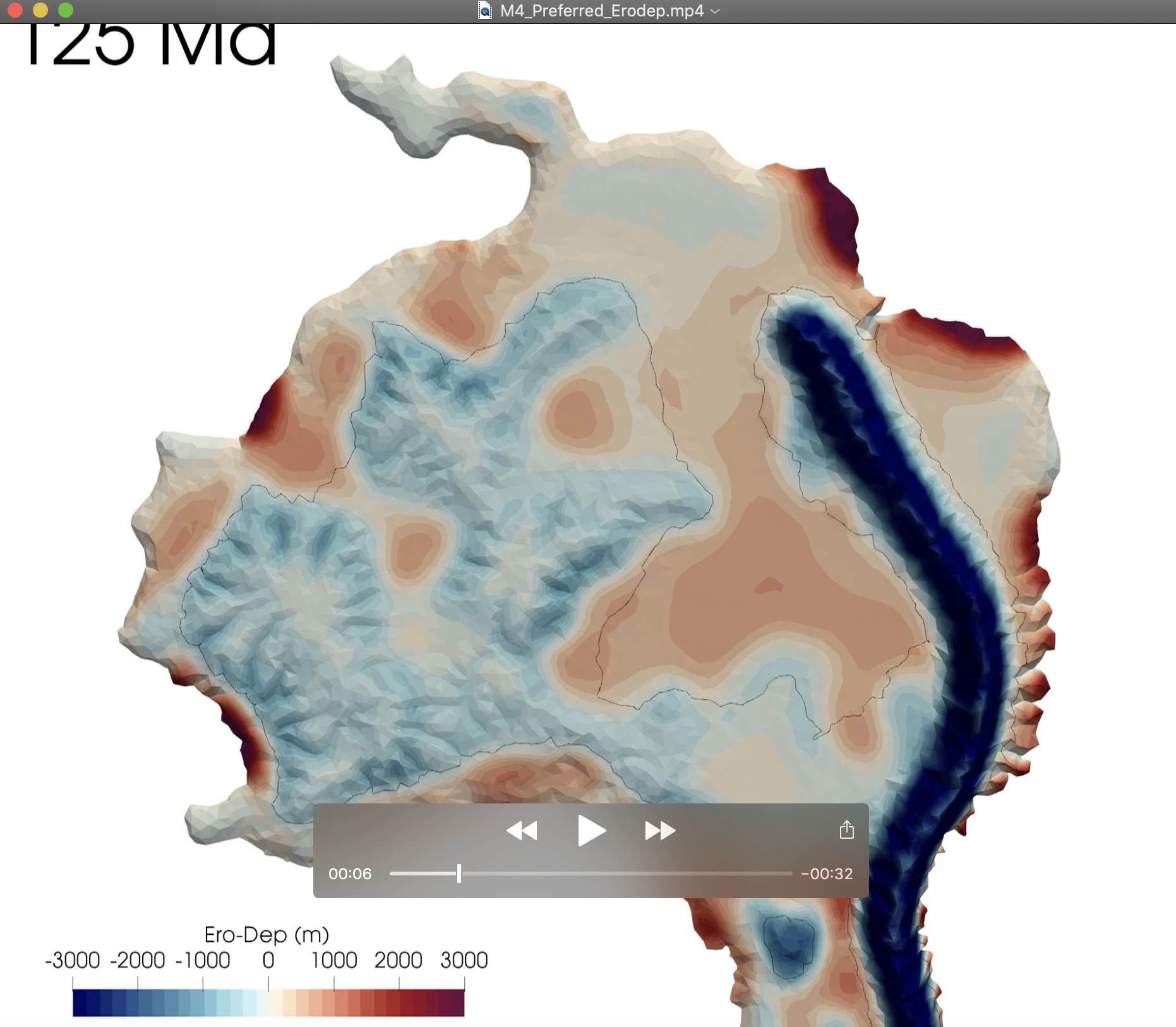Widespread flooding of the Australian continent during the Early Cretaceous, referred to as the Eromanga Sea, deposited extensive shallow marine sediments throughout the Great Artesian Basin (GAB). This event had been considered ‘out of sync’ with eustatic sea level and was instead solely attributed to dynamic subsidence associated with Australia’s passage over eastern Gondwanan subducted material. However, mantle convection models previously used to explain this event have since been shown to overestimate dynamic topography amplitude by a factor of two compared with residual topography estimates. Previous models were also based on a Cretaceous eustatic sea-level peak at ca. 90 Ma in conventional eustatic sea-level curves; however, more recent estimates of global sea level from ocean basin volume (OBV) suggest this peak may have occurred earlier at ca. 120 Ma. Our work links time-dependent erosion and deposition with dynamic topography and eustasy to test their contribution to basin development using the landscape evolution code pyBadlands. Our results show that the lower amplitude estimates of dynamic topography derived from pseudo-compressible mantle flow models better reflect the Cretaceous vertical motions of the Australian continent (ca. 100 m) compared with their incompressible counterparts (ca. 200–400 m). Additionally, our models include the Neogene north-eastward tilting of Australia, elusive in most previously published geodynamic models. In conjunction with an OBV-derived sea-level curve, our preferred landscape evolution model broadly matches the Cretaceous inundation patterns and first-order sedimentary sequences in the GAB. The results highlight that the Early Cretaceous inundation of the Australian continent is likely a combination of high global sea levels and the regional effects of dynamic subsidence. Our work provides a framework for a new generation of evolving paleogeographic models at continental scales, while also providing key insights into the viability of existing sea-level curves and dynamic topography estimates for reproducing topographic and basin evolution.
![]()

